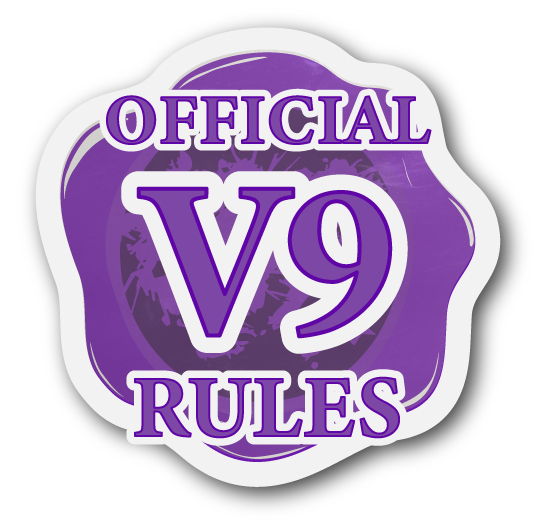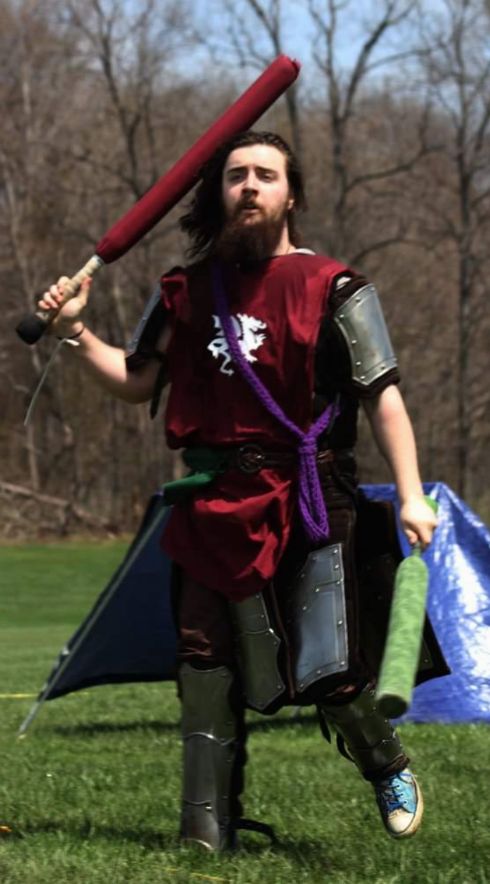V9: Death
- The Amtwiki is the official home and primary source for Amtgard V9 Rules as of February 25, 2023.
- These rules are currently in Open Alpha Playtest. See the Playtest Disclaimer for more details.
- To learn more about Amtgard V9 Development, please visit Amtgard.com.
- To view the current Amtgard V8 ruleset, please see the Amtgard V8 Rulebook.
Death
Death is common in the game of Amtgard. While living players tend to have the most fun, dead players still have certain rules and responsibilities they must adhere to in order to keep the game running smoothly.
Declaring Death
Players may declare themselves dead at any time, not just when they are actively killed. Upon death, a dead player must loudly declare "DEAD!".
Death declarations are divided into two categories: Calling Dead and Taking a Death.
Calling Dead
Calling Dead is the act of declaring oneself dead due to natural gameplay causes, such as when it is caused by another player or effect, like a wound to the Torso. This is the typical form of death declaration.
- Players may also Call Dead before being engaged in melee if they wish to avoid being physically struck. The attacker who is most likely to have caused the death of the player will be considered to have dealt the killing blow, and allowed to activate any relevant abilities as though they had done so. This interaction should be conducted in good faith and cannot be done if the attacker isn't actually trying to kill the player.
- Players may call themselves dead when a strange interaction occurs and it is determined that the player should have died somewhere in the confusion but the specifics are muddy. If untangling the results of an engagement are too difficult, a player might simply call themselves dead to acknowledge the ‘worst case scenario’. Similar to the above, the attacker who is most likely to have caused the death of the player will be considered to have dealt the killing blow, and allowed to activate any relevant abilities as though they had done so.
- Lastly, players who are at risk of a real-life safety issue may call themselves dead to quickly leave combat without interrupting play.
Taking a Death
Taking a Death is the act of declaring oneself dead for any reason that does not fall under ‘Calling Dead’. This typically refers to deaths taken for tactical advantage in games where dying would be more beneficial than staying alive in certain circumstances.
- Players who ‘Take a Death’ are immediately severed and thus may only return to life by respawning. Further, this death does not count towards any prerequisites for the player or their allies.
- Any player who deliberately kills themselves in a self-inflicted manner will count as ‘Taking a Death’. This includes but is not limited to striking oneself or knowingly running into an non-player hazard (such as a lava zone) with the intent to die. Allowing a team-mate or other player to kill you does not count as 'Taking a Death'.
- Similar to Calling Dead, if a player 'Takes a Death' while another player is actively trying to kill them, the attacker who is most likely to have caused the death of the player will be considered to have dealt the killing blow, and allowed to activate any relevant abilities as though they had done so.
- For roleplay scenarios, a player is only considered to have ‘Taken a Death’ if the death would break immersion or is otherwise only happening to exploit gameplay mechanics. A player who willingly sacrifices themselves to a volcano god would not count as 'Taking a Death' because it is in line with the roleplay.
Being Dead
Death is a unique condition. It is not a state or effect. It can only be removed by Returning to Life.
- The universal symbol for death is placing your hand or weapon over your head, and presenting the rest of your body in an obviously non-aggressive manner.
- This symbol is also sometimes used to indicate "Out of Game" or "Out of Character". The context at the time is usually enough to figure out the intended meaning.
- Upon dying, the player must declare ‘Dead!’ loudly and clearly, after which point they are affected in the following ways:
- The player gains the ‘Dead’ condition and is no longer considered a living player.
- Any chants they were maintaining are ended.
- Any primed spellballs that are not already mid-air cease to be primed.
- Enchantments on the player become inactive and do not bestow any effects.
- Any status effects except Severed are removed.
- The player may ignore any Wounds as long as they are dead.
- The player must remove themselves from the immediate vicinity of combat in the least disruptive manner possible. A dead player's first consideration upon dying should be to avoid obstructing any on-going combat around them. If you dropped your weapons or equipment, you may need to leave them on the ground and return to grab them once combat has moved on.
It is important to declare ‘Dead!’ loudly and clearly. A player who does not indicate their Death promptly is likely to be struck again under the assumption that they are still alive.
- While dead, players must adhere to the following rules:
- May move about the battlefield as long as they avoid obstructing combat or interactions between living players and do not create confusion about their status as a Dead player.
- Cannot further affect or be affected by gameplay unless explicitly allowed by another rule.
- Cannot communicate with living players unless declaring necessary game information or otherwise allowed by a specific effect.
- May collect their own discarded equipment.
- Cannot spy, distract, or otherwise generate a gameplay advantage for their team by using their Dead condition to move through or linger in locations that they have no reason to be in, such as an enemy base on the other side of the field. Use common sense and act in good faith.
Returning To Life
When a dead player is returns to life by one of these means they must loudly declare ‘ALIVE!’, at which point they immediately lose their ‘Dead’ condition and become a living player once more.
There are two ways a dead player can return to life: Respawning and Revival.
Respawning
Each Amtgard activity will have rules for when, where, how, and even IF players are able to respawn after death. Consult the rules for your particular activity or check in with the Game Organizer or Reeve during setup. Most commonly, players will have to wait a certain amount of time (called a ‘Death Count’) and then automatically return to life at a specific respawn location.
When a player returns to life by respawning, they are restored in the following way:
- All wounds are restored.
- All armored locations are restored to full value.
- All weapons, shields, and other equipment are restored.
- All uses of per-life abilities are restored.
- All enchantments are removed.
- All remaining status effects are removed, including Severed.
Revival
Revival occurs when a player is returned to life through a means other than Respawning, such as the use of an ability like the Resurrect spell.
See the Revive keyword for further details.
Core Combat Rules Acceptable Contact · Hit Locations · Striking Your Opponent · Wounds · Death · Dragging


